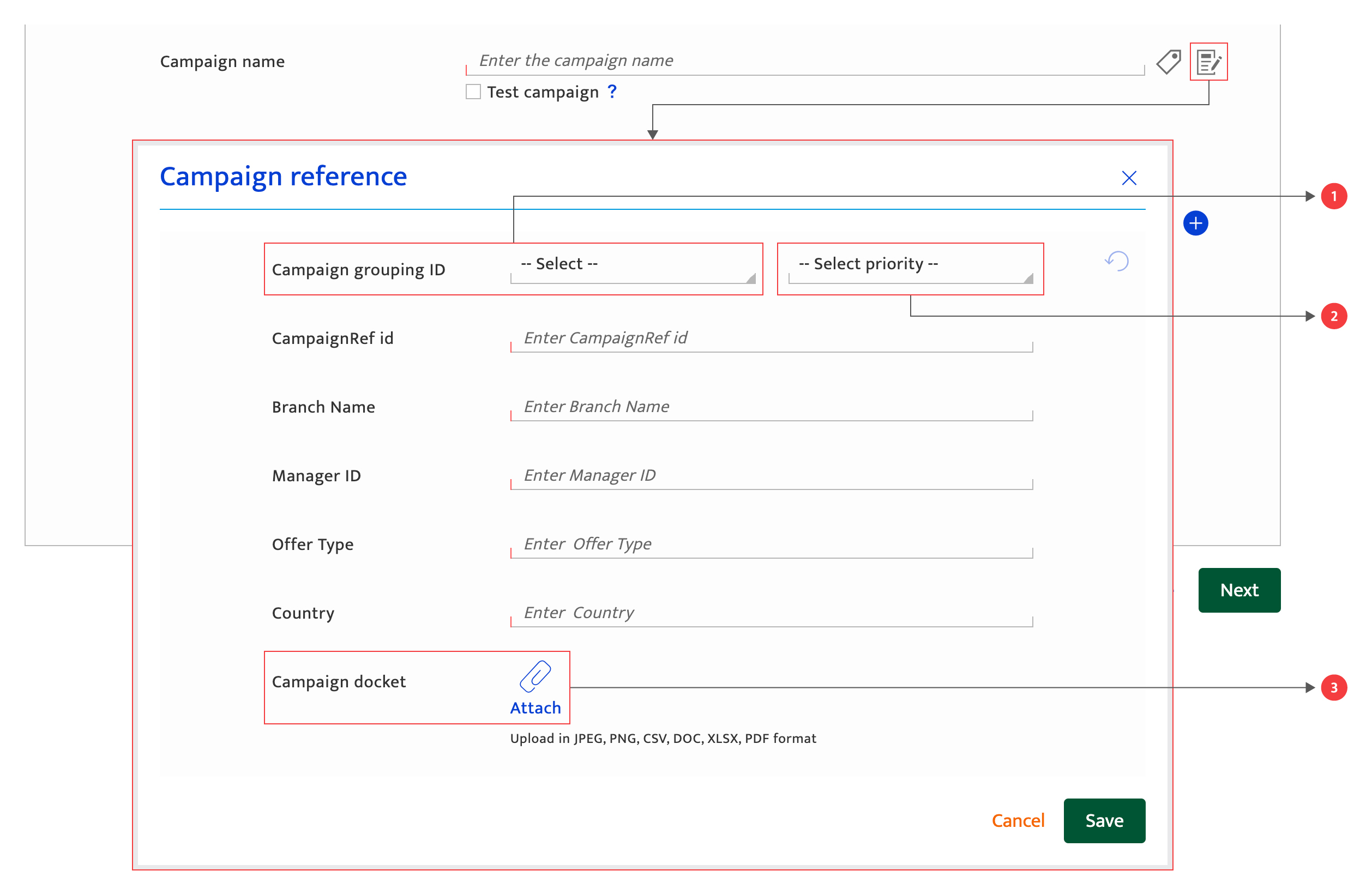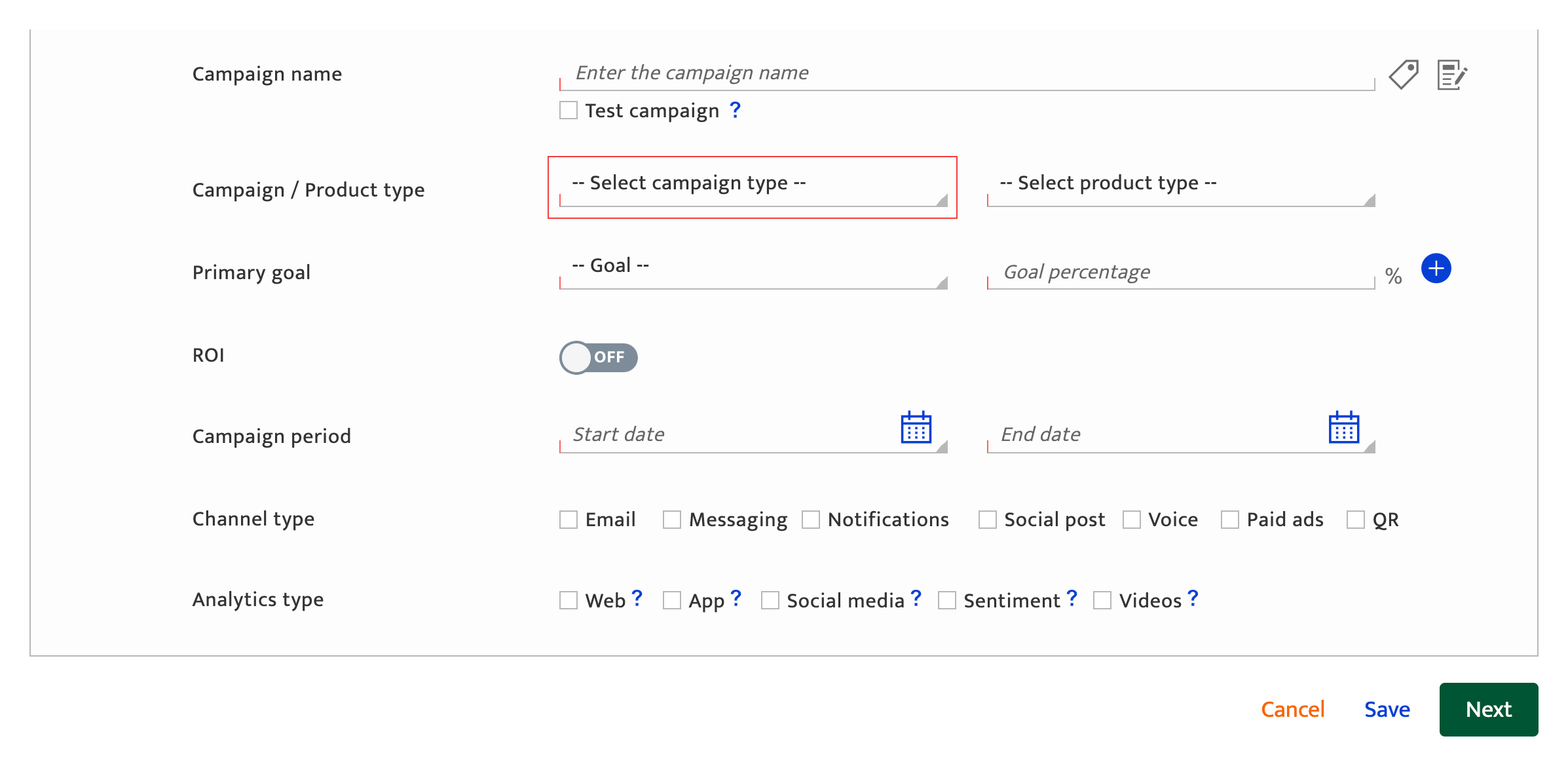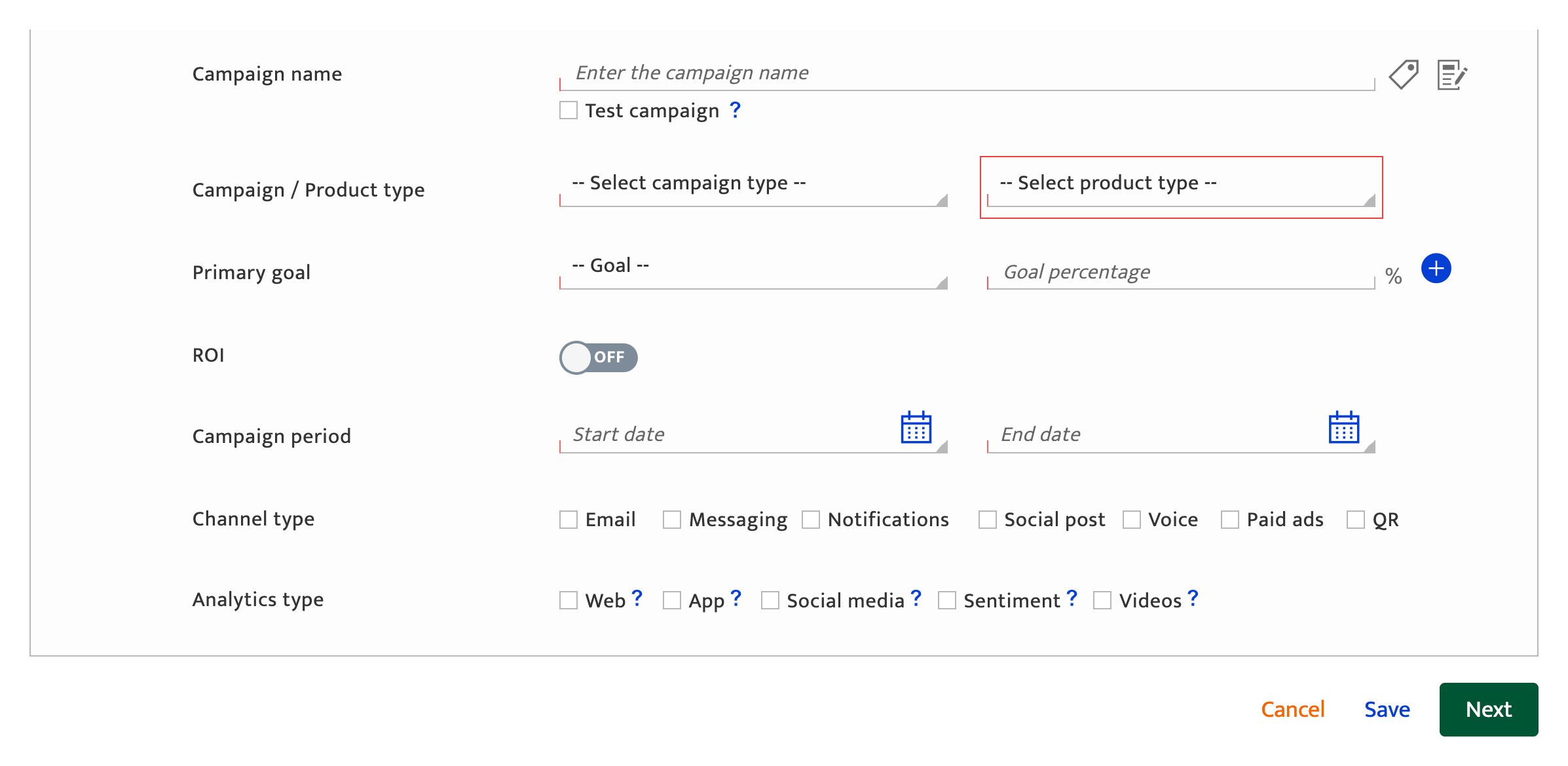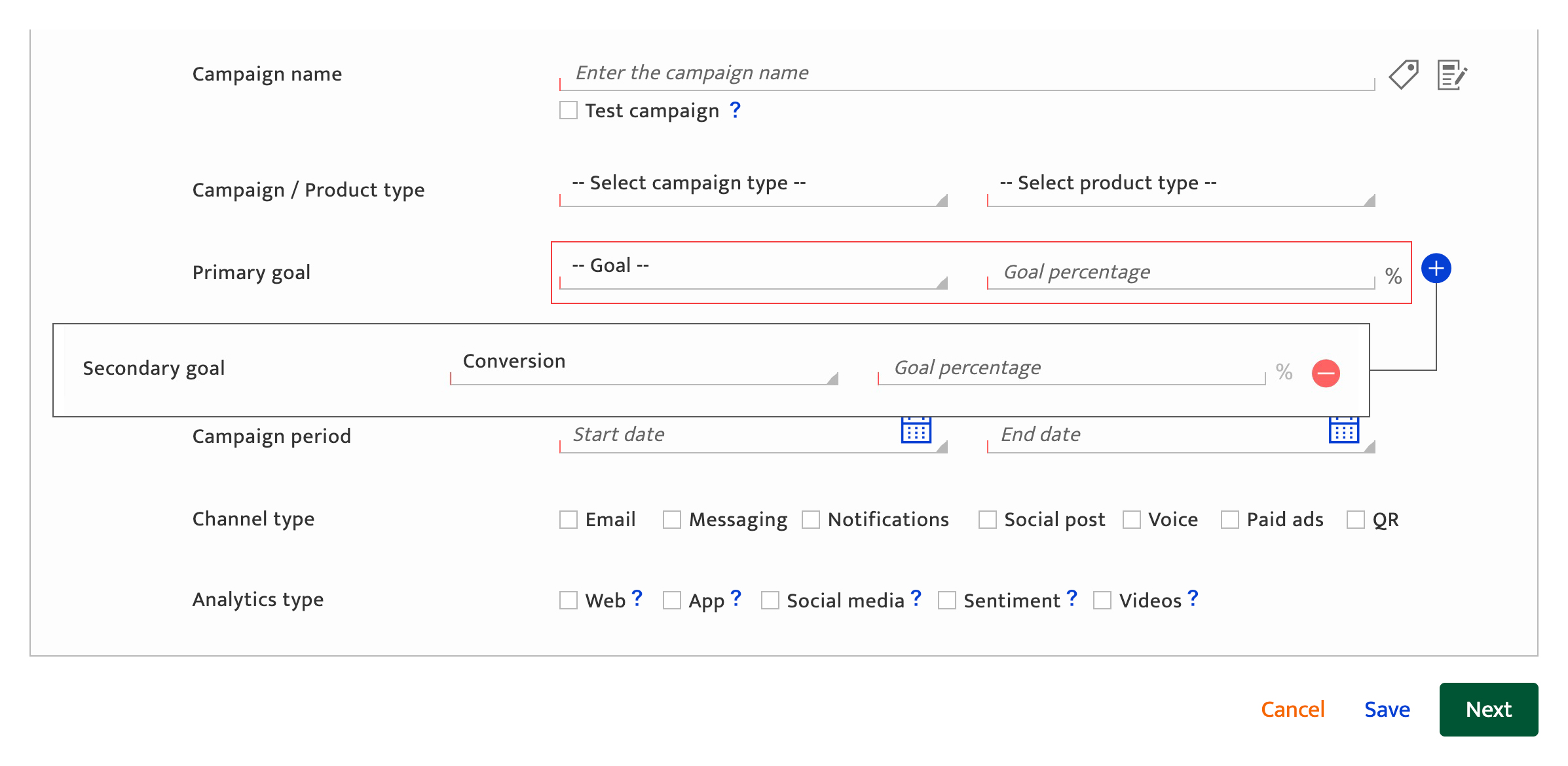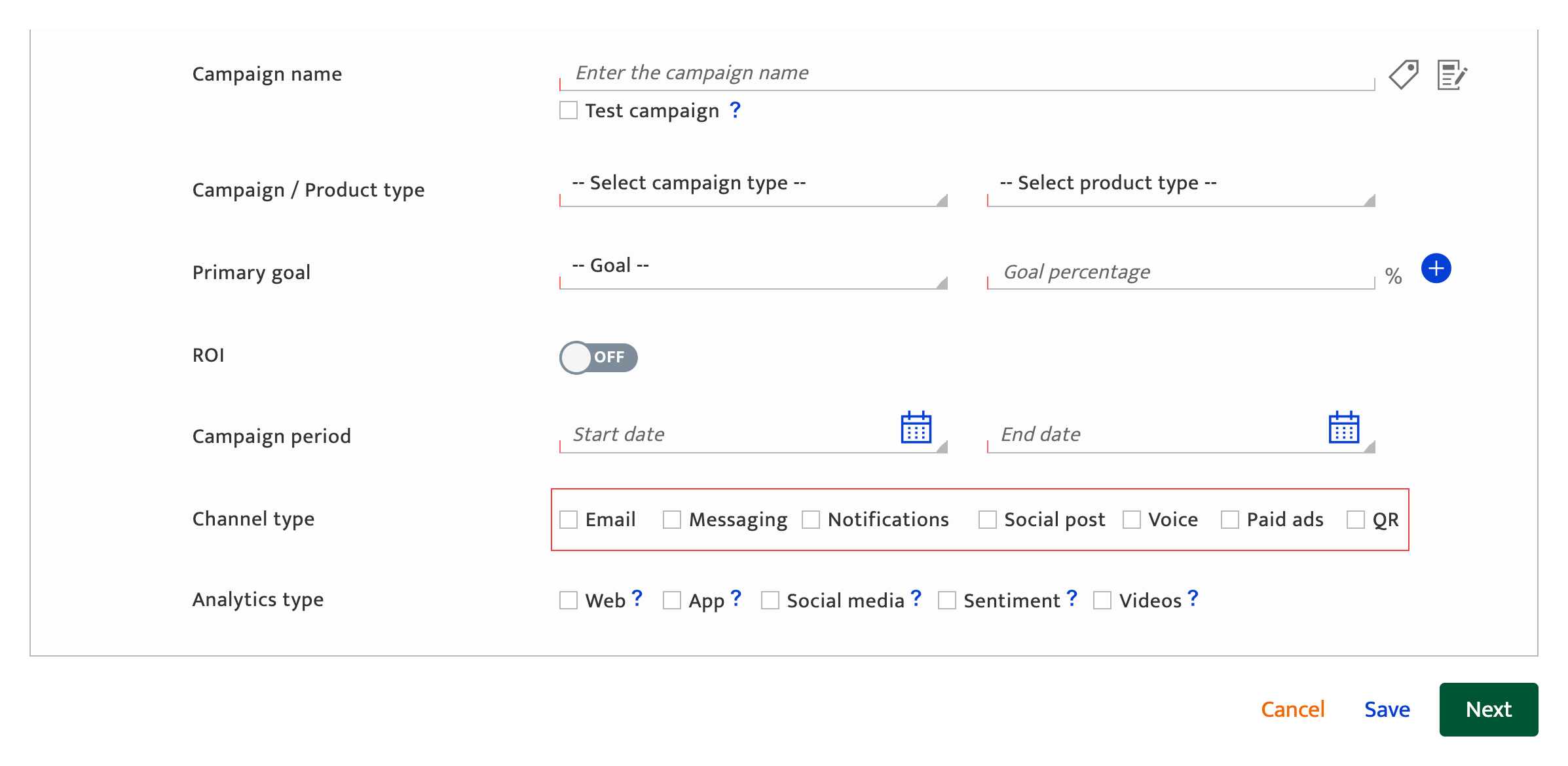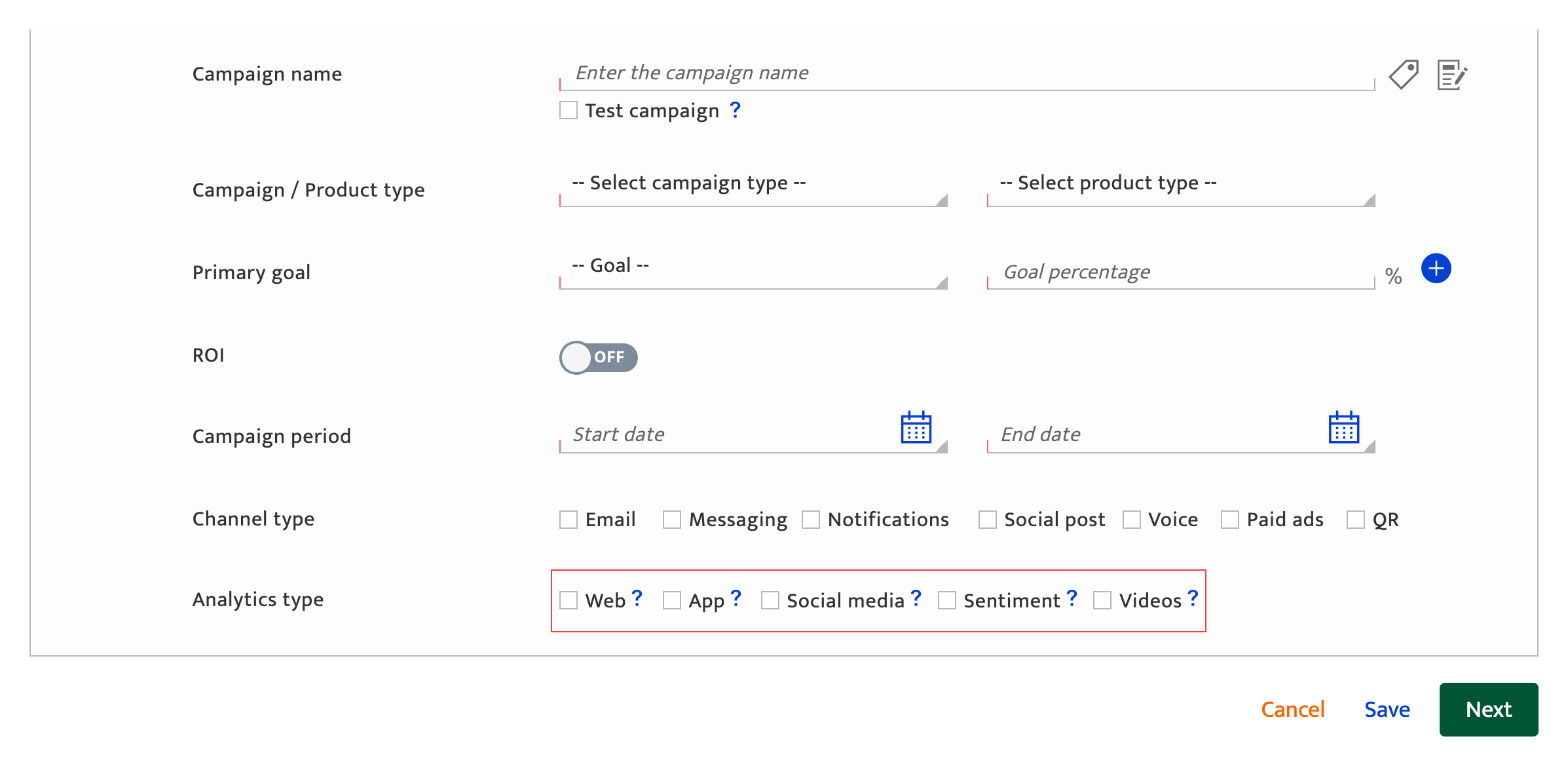SDC plan
Overview#
This section addresses the setup of the primary specifications for a single dimension communication.
Accessing single dimension communication planning#
To start creating a single dimension communication:
- Click on the communication icon from the menu at the top of your Resul screen. You are taken to the communication list screen.
- Click on the "+" icon to create a new communication. You are taken to the Delivery method selection screen.
- Select single dimension by clicking on the single dimension icon. You are taken to the communication details screen.

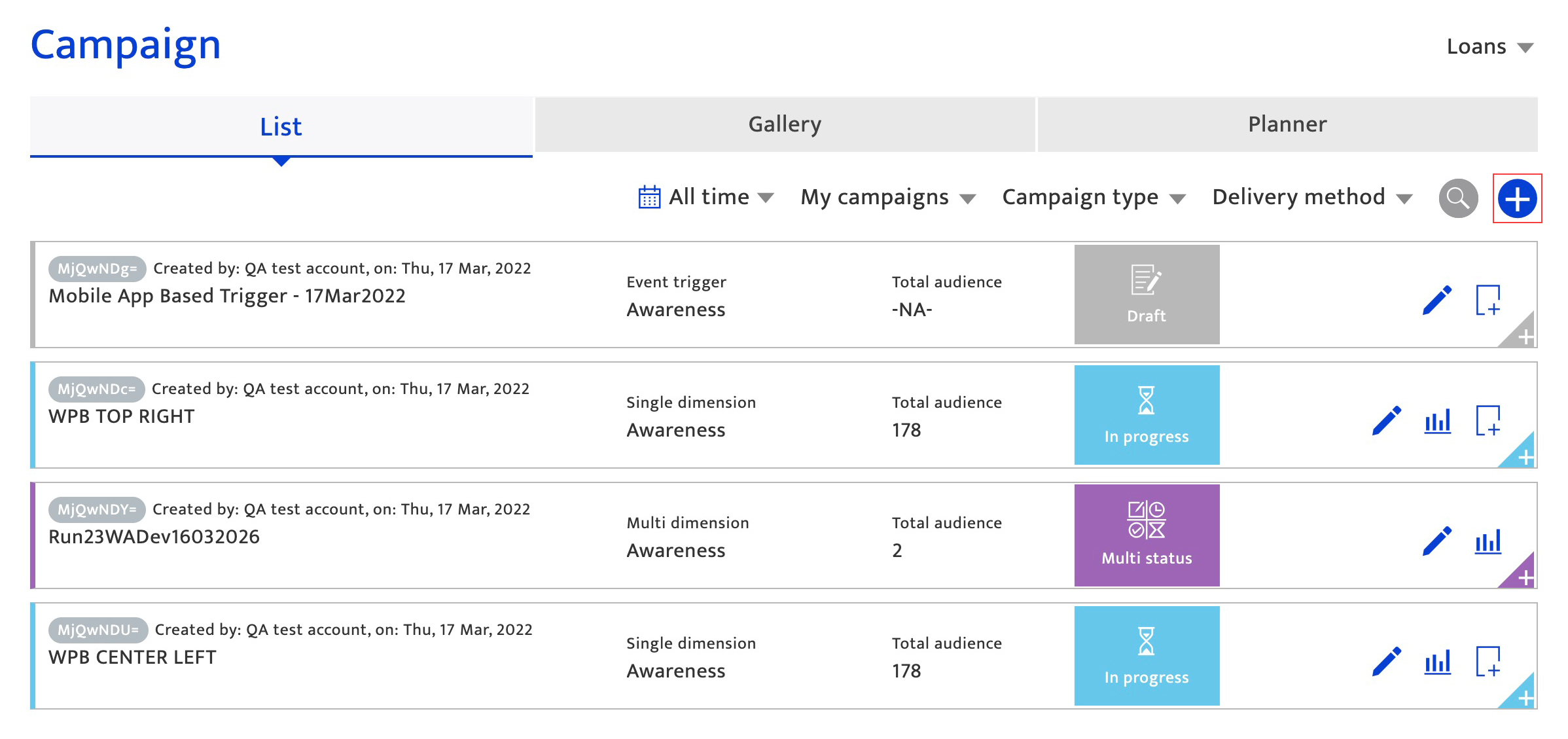

Setting up the communication#
A single dimension communication setup requires input for the following elements in the sequence recommended.
- Set the communication name to be an easily recognizable name that will be used in the communication list, Reporting, the Dashboard, and Analytics. You can use up to 50 characters, including a combination of numbers, text, and special characters.
- Create communication tags These communication tags will be associated with the communication and can be used to identify it using the search feature in the communication list. This information is optional. Click on the tag icon and enter keywords/phrases for the communication with comma separators. Note the keyword and character limits.
- Create communication reference information to record information for your internal purposes. This information is optional.
You can enter a maximum of seven fields of information. Information on up to 5 brand specified alphanumeric fields can be captured as well. These fields have to be defined during on-boarding.
Two fields automatically provided are:- communication grouping ID
- Priority
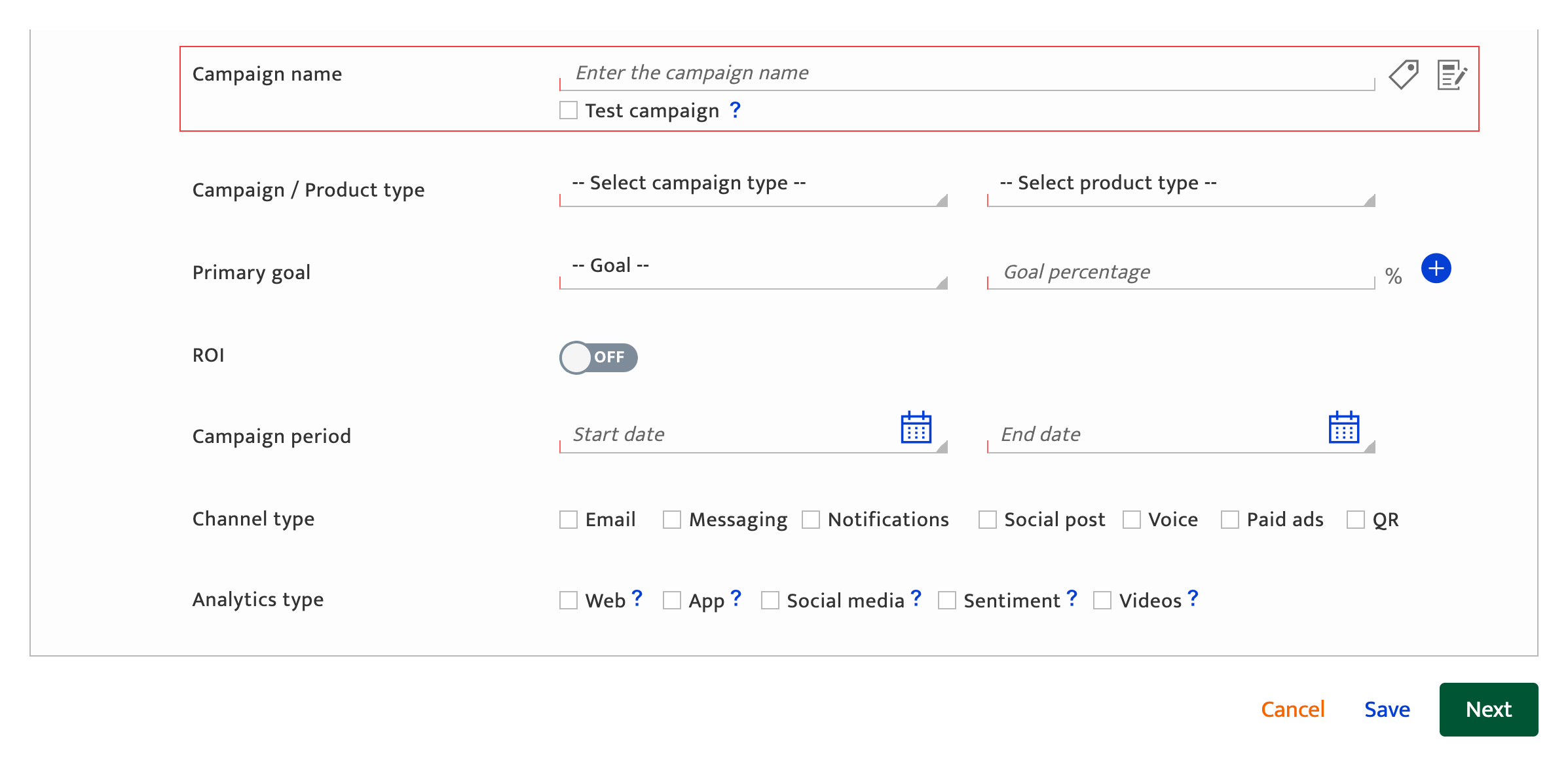
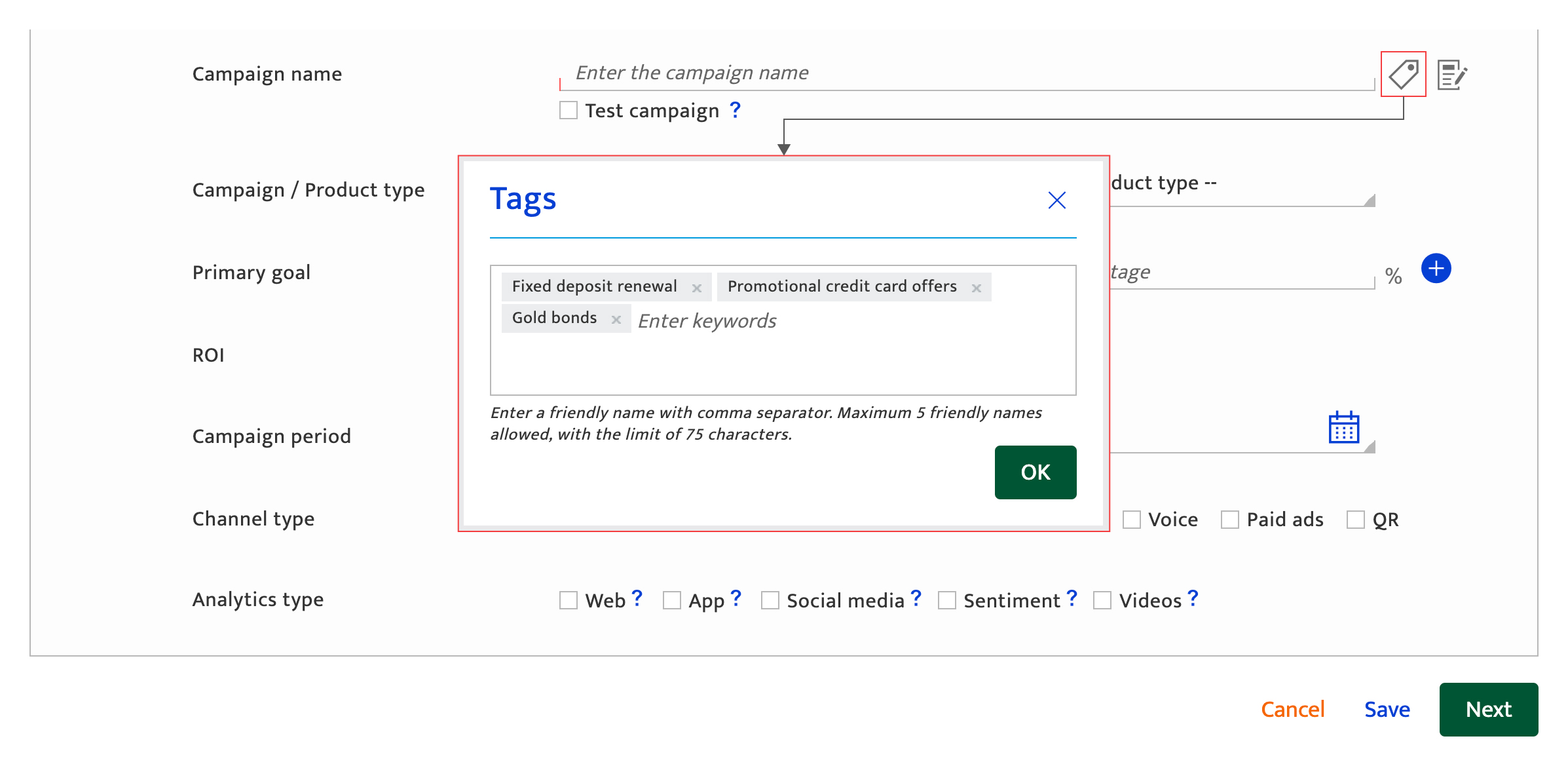
Using the automatic fields#
- Input the communication grouping ID to group multiple communications under a single umbrella communication. You might run multiple communications for Christmas and group them under a single ID for reference. To set the priority:
- Select the relevant communication grouping ID from the drop-down list, or
- Create a new communication grouping ID by clicking on "New grouping ID".
- Set the priority using the drop-down list to define the order in which the communications are to be sent within a Grouping ID.
- Attach one communication docket of any type for internal information purposes (e.g. a communication manager attaching checklist document for reference). Click on the Attach icon and upload.
- Tick the test communication checkbox if this communication is a test communication. If this is enabled the communication analytics will not be generated for this communication and the communication's performance will not affect the communication dashboard report.
- Select the communication type from the drop-down list. communication types need to be defined during on-boarding.
- Select the product type from the drop-down list. Product types need to be defined during on-boarding.
- Set the primary goal to be used to measure communication performance and success. The goal is used for benchmarking purposes as well as for descriptive, predictive and prescriptive analytics. Performance against this goal will be displayed in the Dashboard, as well as in the analytics for that communication. A secondary goal can be defined as well. The secondary goal is not used on the dashboard or to assess performance against target. The secondary goal is used by Resul for analytics and is reported in the communication analytics.
To set the primary goal- Select one of the metrics to be used: Reach, Engagement, or Conversion from the drop-down list.
- Enter the goal percentage(s) that you are targeting.
- Select the conversion types from the multi-select drop-down If the conversion is set as the primary goal. Conversion types need to be defined at the time of on-boarding.
To set the secondary goal: - Click on the "+" icon to set an optional secondary goal for the communication and follow the same process as the setting the primary goal. This goal is not used for any communication performance analytics.
- Specify the communication period with a start and end date. The end date is the last date that analytics for the communication will be captured.
Note that you will schedule the specific outbound communication timing for each channel in the content creation step. Enter the details in the format displayed or use the icons provided. - Select the channel type(s) through which you want to deliver the communication. Parameters for specific channels will be defined during content creation. At least one channel type must be selected to proceed to the next step.
- Specify the type of analytics for tracking the audience journey in the channel types selected.
- Proceed to the next steps. There are 3 options to proceed:
- Click "Save" to save the current input and return to the communication list.
All mandatory fields on the current screen must be completed to save successfully. The platform will highlight any missing mandatory information.
The communication will be saved as "Draft" if it is a new communication. If the user has been editing a "Draft" or "Scheduled" communication, the communication state does not change. - Click "Next/" to initiate the following:
- All mandatory fields on the current screen must be completed and the platform will highlight any missing mandatory information.
- If all mandatory fields are completed, the screen defaults to the communication creation screen for the first channel selected for the communication.
- Click "Cancel" to return to the communication list screen and discard all current input.
- Click "Save" to save the current input and return to the communication list.
